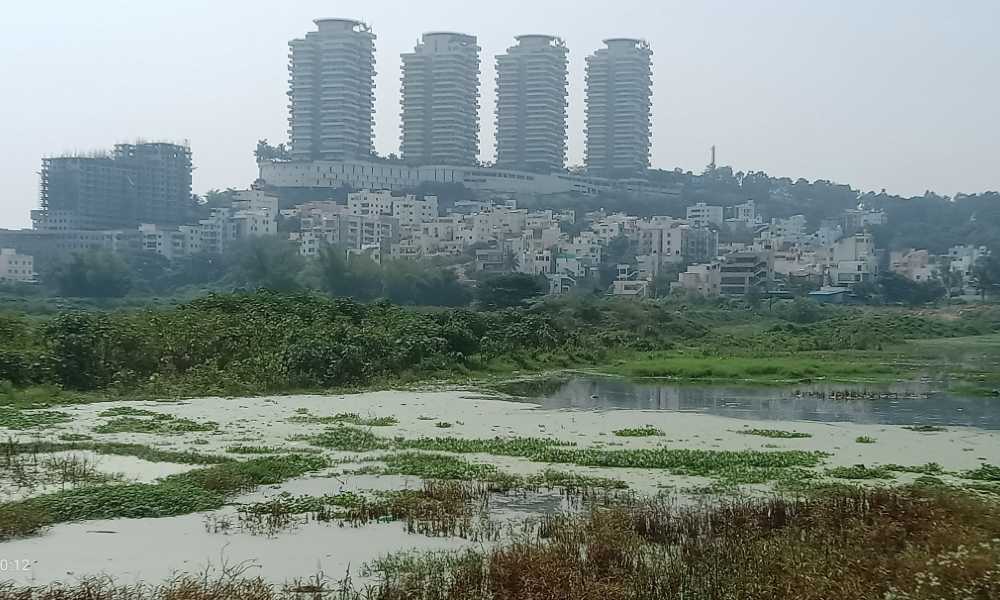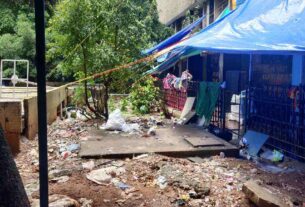The Bruhat Bengaluru Mahanagara Palike (BBMP) plans to allocate Rs. 14 crore to restore the lake. Work has not progressed since May 2023.
The restoration process of the Hosakerehalli Lake in Bangalore’s Kerekodi area, Rajarajeshwari Nagar, started by the BBMP in March 2023 has not progressed since May. While the BBMP says work will resume soon, they have not fixed a deadline for the project yet. The quality of the silted lake, covered with algae and moss, continues to be poor, according to the Karnataka State Pollution Control Board (KSPCB) data.
Geetha L., Executive Engineer, BBMP Lakes Department said that the BBMP is also responsible for the maintenance and construction of pathways alongside lakes, which would include concretising the mud pathway running alongside the lake, connecting the Kerekodi area to Rajarajeshwari Nagar.
Residents of the Kerekodi area who pass by the lake complained about the foul odour emanating from it and the waterlogging on the mud pathway alongside it. Ramaiah, living in Mookambika Nagar, a locality near the lake, said that he and his family avoid taking the pathway because of the odour coming from the lake. Another resident said that she covers her nose while passing by the lake at times.
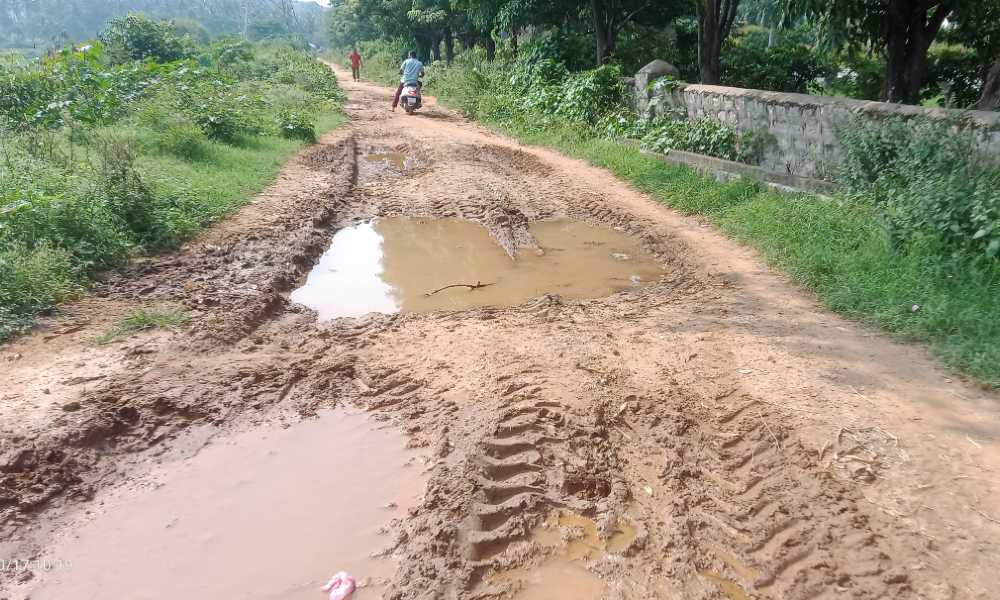
Kumar, a resident of Sapthagiri Nagar, a locality in the Kerekodi area, said that when the restoration work started in March, the mud pathway alongside the lake, a shortcut route connecting the Kerekodi area to Rajarajeshwari Nagar was dug up in order to concretize it. “However, no work has been done after that. In fact, all the digging up has worsened the condition of the path. It now has bigger and deeper potholes which accumulate water whenever it rains, making movement on the path difficult,” he said.
Renuka, a resident of Rajarajeshwari Nagar, who runs a ladies’ beauty parlour in Sapthagiri Nagar, said that before the pathway was dug up, she used it regularly. “I do not use the road now because it is too uneven, with many potholes. I fear I might lose balance of my scooter.” She further said that she takes an alternative route which is longer and takes more time.
According to the ‘Water quality data of Bengaluru lakes’ released by the KSPCB in July 2023, the Hosakerehalli Lake’s use-based class is ‘D’. The KSPCB follows the guidelines set by the Central Pollution Control Board, according to which the designated use of a ‘D’ class water body is “propagation of wildlife, fisheries” and its Water Quality Index or WQI is “unsatisfactory”. The data shows that the dissolved oxygen level of the Hosakerehalli Lake is 4.9 mg/l, compared to graded ‘A’ water bodies which have 6 or more than 6 milligrams per liter dissolved oxygen level.
Mohammed Farooq who lives in one of the shanties close to the lake said that many people from the shanties used to use water from the lake for bathing and washing clothes or utensils. “We have stopped now because the water has become really dirty and smelly.” He added that the people now have to fetch water for everything from a borewell tap located at some distance.
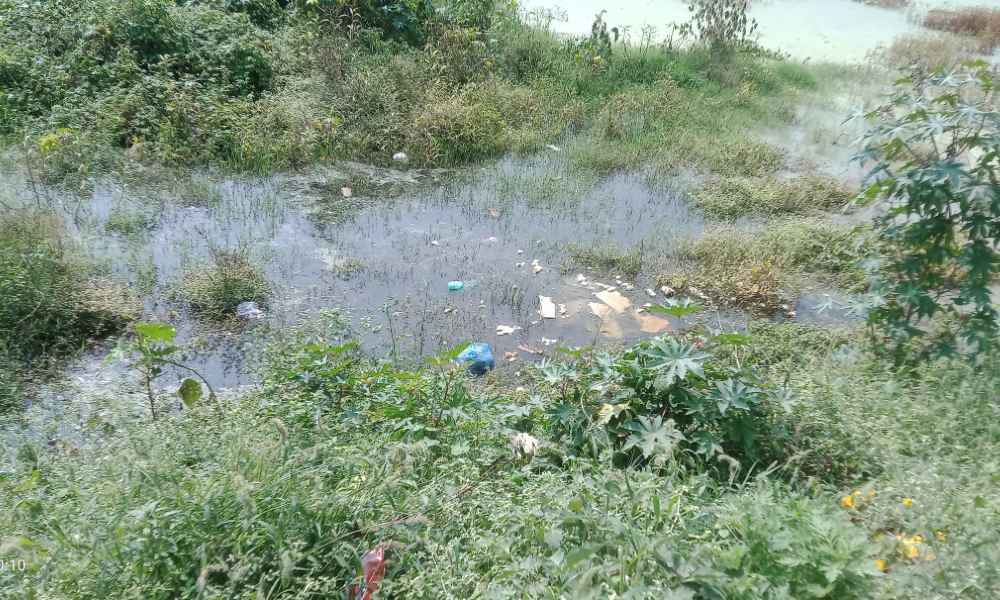
The residents of Kerekodi also say that the area around the lake has turned into a dump yard. Shivaraju who lives in the Pushpagiri Layout, said that he knows of many residents who dispose of their garbage in or around the lake. “In the absence of surveillance and checks, people do whatever they want to the lake,” he said. He added that many concerned residents as well as residents’ associations such as the Sapthagiri Residents’ Association had lodged complaints with the BBMP regarding both the lake and the pathway running alongside it. “However, the work has not yet resumed,” he said.
Geetha L., Executive Engineer, Lakes Department, BBMP, said that the lake’s restoration work had been stopped in May due to the arrival of monsoon. “It is not possible to take up any de-silting or concreting work during the rainy season, which is why we had discontinued the work then. We will resume it soon,” she said.
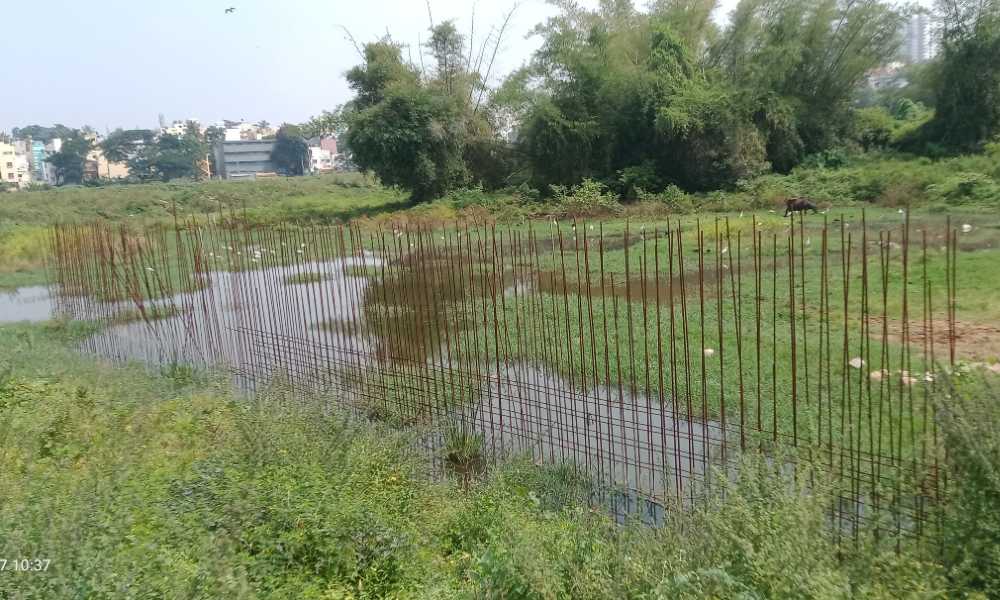
Mahesh M, Assistant Executive Engineer, BBMP (Lakes Department) said that the new, revised plan of the BBMP is to allocate around Rs. 14 crore towards the restoration of the lake, which will include de-weeding and de-silting, concretization and widening of the mud road, extraction and removal of garbage, and fencing the boundary. He said that back in May, there was some issue with payment of the bill of the contractor who had been appointed for the project. “All is well now, and the work will restart soon,” he said. He added that they have not fixed a deadline for the project yet.
Ashika S.L., sustainability consultant at Deepwoods Green Initiative Ltd. said that silting occurs due to overutilization of lake water, that is, when the amount of water being taken from the lake exceeds the amount of water being replenished by rainwater.
She said, “Although desilting is a cheaper and easier way to restore a lake’s natural water holding capacity, it is not sustainable in the long run. Construction of check dams, and contour bunding along the lake are more durable solutions to increase its water holding capacity.” She further said that large- scale plantation of species like vetiver, eucalyptus, water hyacinth and water lettuce enables phytoremediation, or the use of living plants to clean, treat, and control wastes in water, air or soil.
She added that stagnant water, high temperatures, and excessive silt in a lake stimulate algae growth. Algae, apart from emanating a foul odor, reduce the dissolved oxygen content of the lake greatly, causing fish and other microbiota to die, which adversely affects the overall lake ecosystem, she said.

